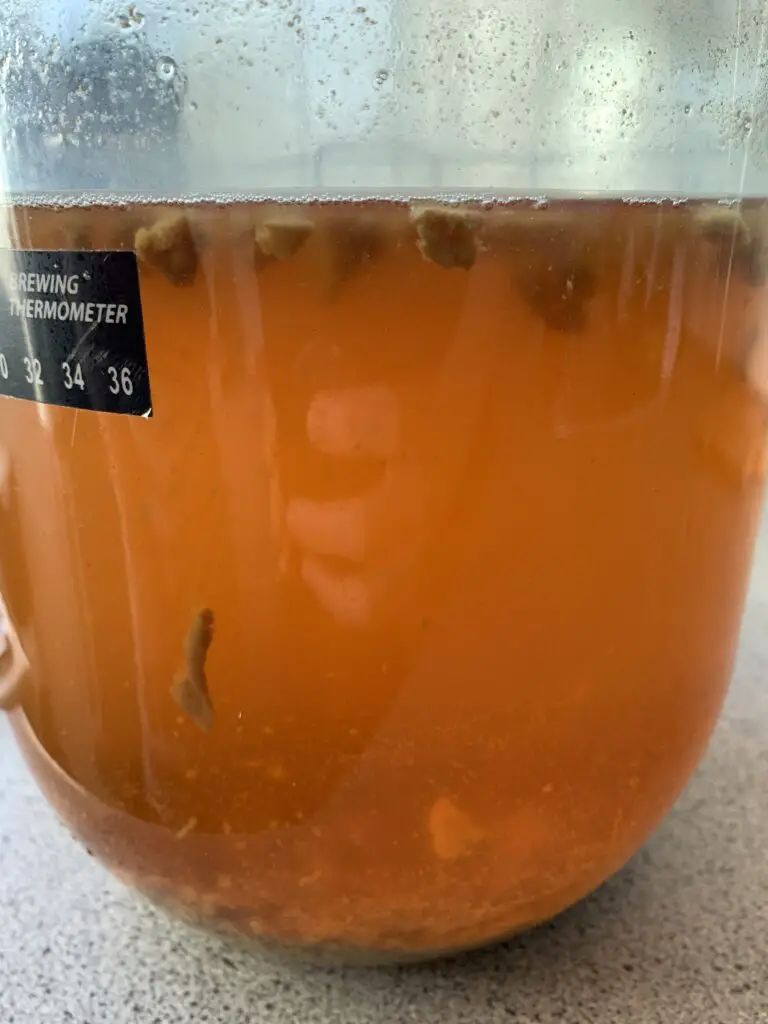When you’re making fruit mead, the details matter. The ingredients, the process, and even the tiny additions can all make a huge difference in the final product.
One of those little details that can have a big impact is pectic enzyme.
So, how do you use pectic enzyme in fruit mead brewing? Pectic enzyme is added to the must (the mix of honey, water, and other ingredients before fermentation) to break down the pectin present in fruits.
Understanding Pectin and Its Impact on Fruit Mead
Pectin is a natural substance found in fruits. It’s what gives jams and jellies their thick, gooey texture. But in fruit mead, it can cause a hazy appearance and a rough texture. That’s where pectic enzyme comes in – to break down this pectin and improve the overall quality of your fruit mead.
The Role of Pectic Enzyme in Fruit Mead Brewing
Pectic enzyme, also known as pectinase, is a type of protein that breaks down pectin. When pectin is broken down, it allows the juice of the fruit to be released more effectively, contributing to a fuller flavor. It also helps to clarify the fruit mead by breaking down the haze-causing pectin.
The Right Time to Add Pectic Enzyme in Fruit Mead Brewing
The best time to add pectic enzyme is prior to fermentation. This is because pectic enzyme works best in a low-alcohol environment.

If you add it after fermentation, it will still work, but it may take longer and be less effective.
For fruit mead types like melomel and cyser, where pectin is present in fruits, adding pectic enzyme is crucial to achieve the desired clarity and texture.
The Correct Amount of Pectic Enzyme to Add
You might be wondering how much pectic enzyme to add. The general rule of thumb is to add 1/2 teaspoon of pectic enzyme per gallon of must.
However, if you’re using a high-pectin fruit like apples or pears, you may want to double this amount.
How to Add Pectic Enzyme to Your Must
Adding pectic enzyme to your must is a simple process. Simply dissolve the correct amount of enzyme in a small amount of water, then stir it into your must.
It’s important to stir thoroughly to ensure the enzyme is distributed evenly.
Waiting for the Magic to Happen
After adding the pectic enzyme, you’ll need to wait for it to do its job. This can take anywhere from a few hours to a couple of days, depending on the amount of pectin in your must.
You’ll know it’s working if you see a decrease in the haziness of your must.
The Difference Pectic Enzyme Can Make
Adding pectic enzyme to your fruit mead can make a significant difference in the final product. It can result in a clearer, smoother mead with a fuller fruit flavor. It’s a small addition that can take your fruit mead from good to great.
Conclusion: The Power of Pectic Enzyme in Fruit Mead Brewing
As you can see, pectic enzyme is a powerful tool in fruit mead brewing, especially for melomel and cyser types where pectin is present in fruits. It helps to break down pectin, resulting in a clearer and smoother mead with enhanced fruit flavors.
| Fruit Mead Type | Presence of Pectin in Fruits | Time to Add Pectic Enzyme | Recommended Amount of Pectic Enzyme |
|---|---|---|---|
| Melomel | Yes | Before fermentation | 1/2 tsp per gallon of must |
| Cyser | Yes | Before fermentation | 1/2 tsp per gallon of must |
| Traditional Mead | No | N/A | N/A |
Although it’s a small detail, it can have a big impact on the final product of fruit mead, making it an essential addition for fruit mead makers seeking clarity and improved texture in their brews.
Here are some key facts to remember about using pectic enzyme in mead brewing:
1. Pectin is a natural substance found in fruits that can cause a hazy appearance in mead.
2. Pectic enzyme breaks down pectin, improving the clarity and smoothness of the mead.
3. Pectic enzyme is best added before fermentation.
4. The general rule of thumb is to add 1/2 teaspoon of pectic enzyme per gallon of must.
5. If you’re using a high-pectin fruit, you may need to double this amount.
6. Pectic enzyme is added by dissolving it in a small amount of water and stirring it into the must.
7. The pectic enzyme needs time to work, which can take anywhere from a few hours to a couple of days.
8. Adding pectic enzyme can result in a clearer, smoother mead with a fuller fruit flavor.
9. Pectic enzyme is a small detail, but can have a big impact on the final product.
10. As with all aspects of mead brewing, attention to detail and patience are key for the best results.
I hope you found this guide useful and that it inspires you to experiment with pectic enzyme in your next mead brewing adventure. Happy brewing!
FAQs
How many drops of pectic enzyme per gallon?
The recommended dosage of pectic enzyme for fruit mead types like melomel and cyser is typically 1/2 teaspoon per gallon.
Can I add pectic enzyme during secondary fermentation?
Yes, you can add pectic enzyme during secondary fermentation. Pectic enzyme is commonly used to break down pectin, a complex carbohydrate found in fruits. Adding it during secondary fermentation can help improve clarity and flavor by breaking down any residual pectin that may cause haze or cloudiness in the final product.
How much pectic enzyme to use?
The amount of pectic enzyme to use depends on the specific recipe or application. Generally, it is recommended to follow the instructions provided by the enzyme manufacturer. The dosage can vary depending on factors such as the type and quantity of fruit, desired outcome, and enzyme strength. It is important to use the enzyme within the recommended dosage range to achieve optimal results.
How do you add pectic enzyme to must?
To add pectic enzyme to must, first ensure that the must is at the appropriate temperature (usually around 50-60°F or 10-15°C). Measure the recommended amount of pectic enzyme according to the instructions provided by the manufacturer. Dissolve the enzyme in a small amount of warm water to create a slurry. Slowly pour the slurry into the must while stirring gently to ensure even distribution. Allow the pectic enzyme to work its magic on the must for the recommended duration, typically 12-24 hours, before proceeding with the winemaking process.
Can you use pectic enzyme in secondary?
Yes, pectic enzyme can be used in secondary fermentation for fruit meads. Pectic enzyme helps break down pectin, a complex carbohydrate found in fruits, which can improve clarity and enhance flavor extraction. Adding it during secondary fermentation can further aid in the breakdown of pectin and improve the overall quality of the final product.
Can I add pectic enzyme during fermentation?
Yes, pectic enzyme can be added during fermentation for fruit meads. Pectic enzymes help break down pectin, a complex carbohydrate found in fruits, which can improve juice extraction and clarify the final product. Adding pectic enzyme at the start of fermentation can enhance the release of flavor compounds and improve overall fermentation efficiency.




